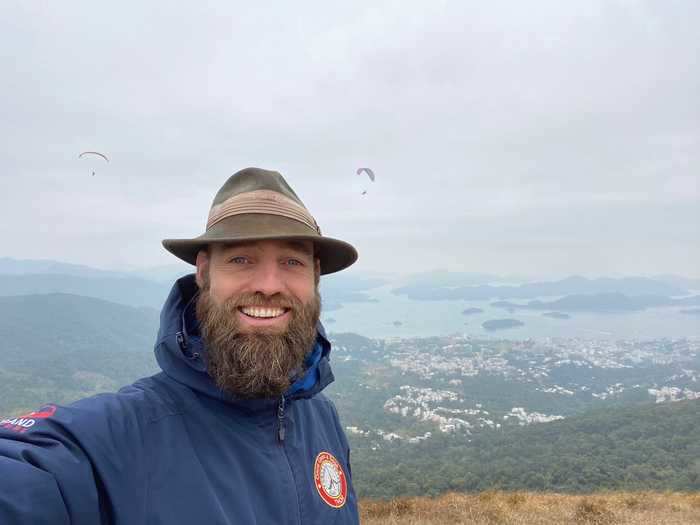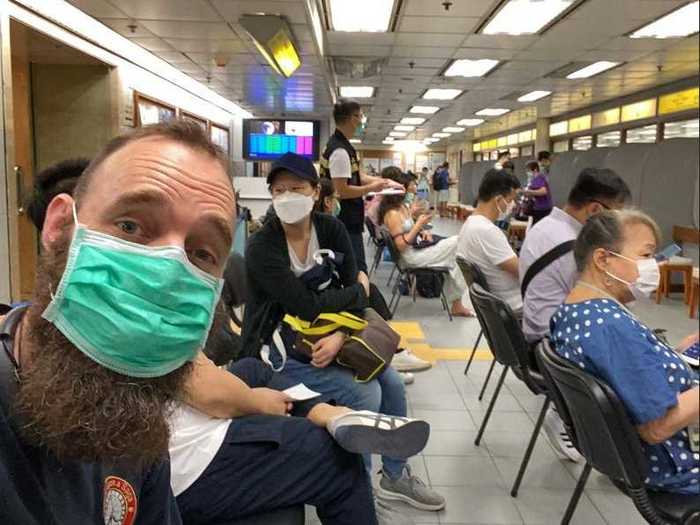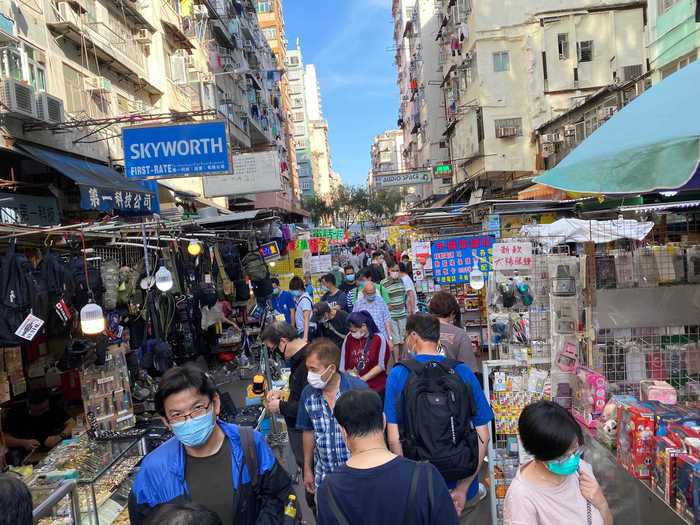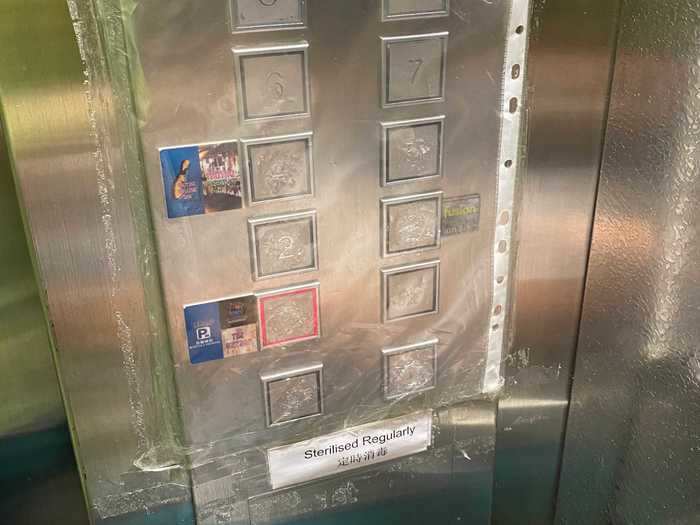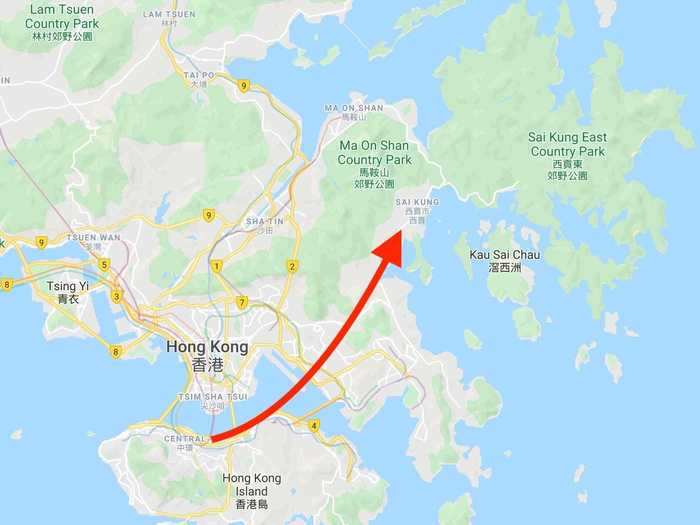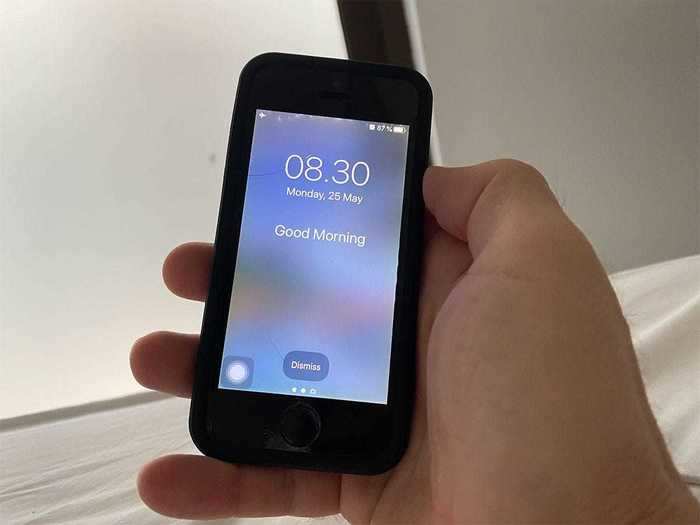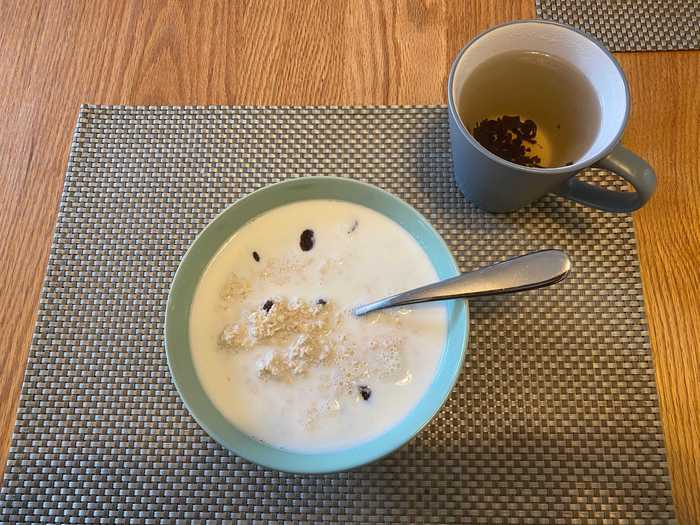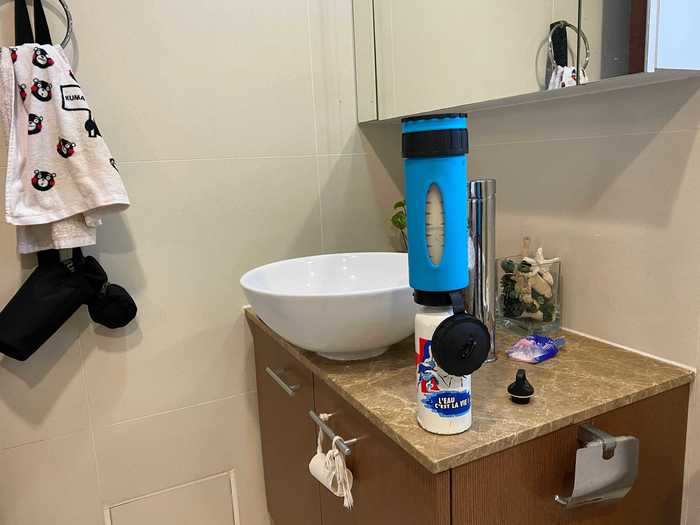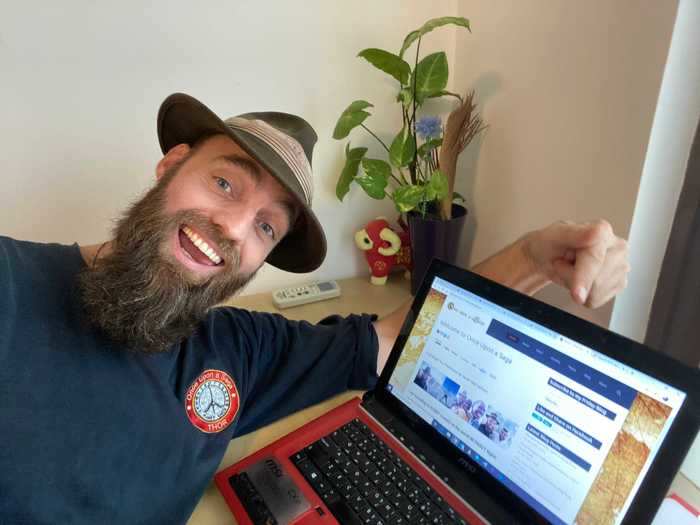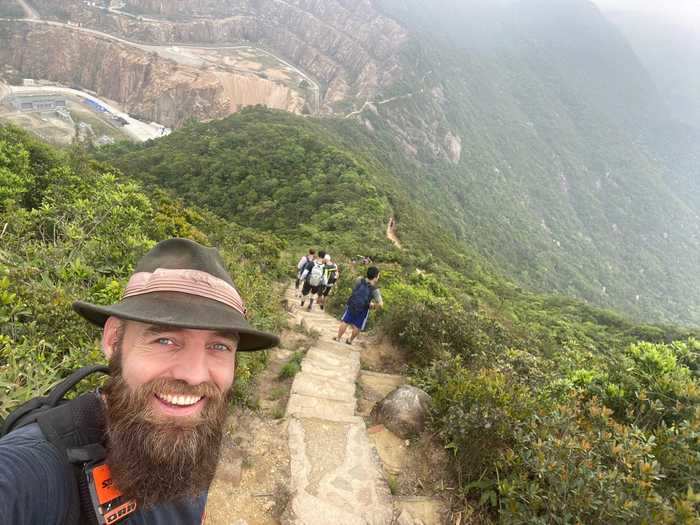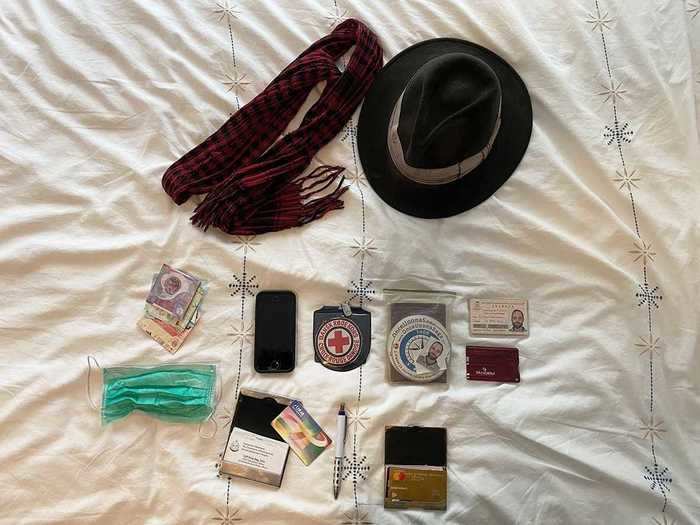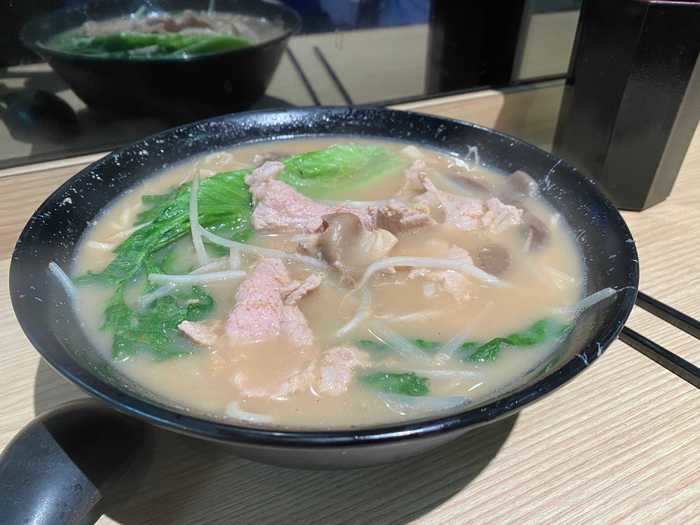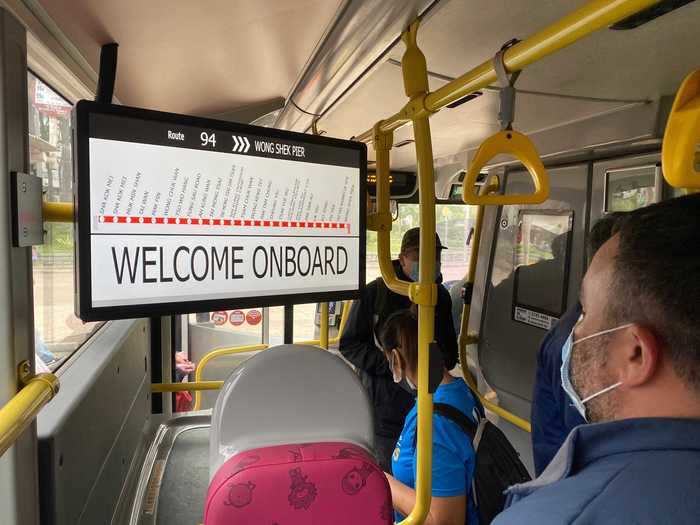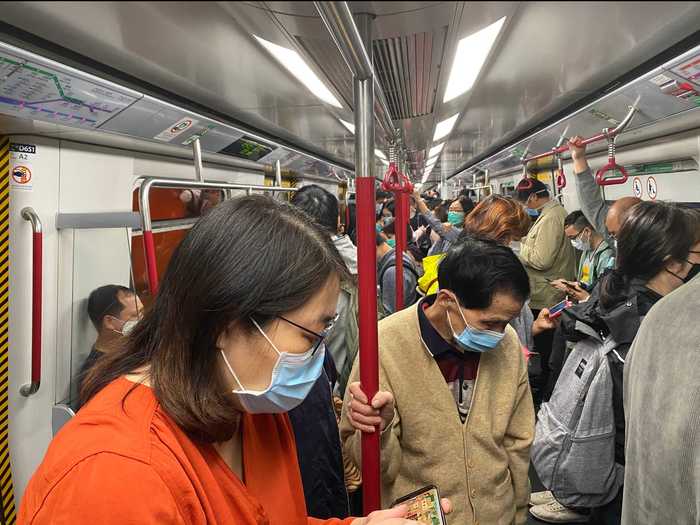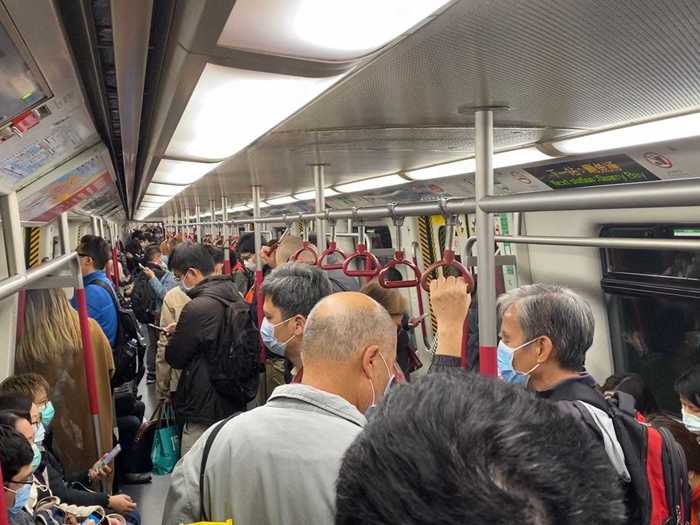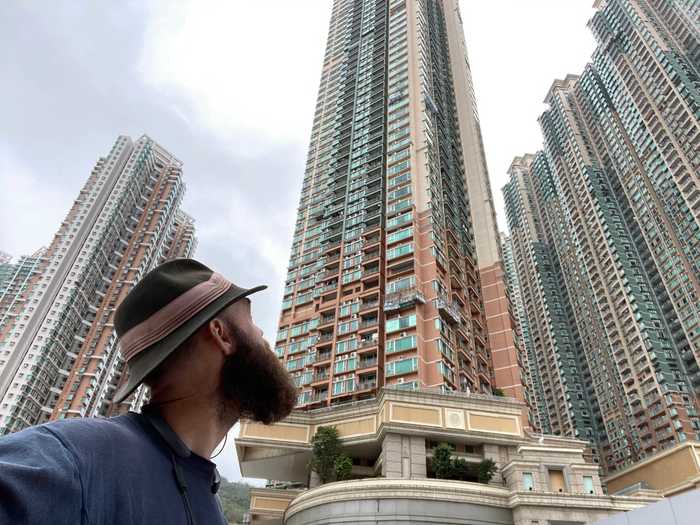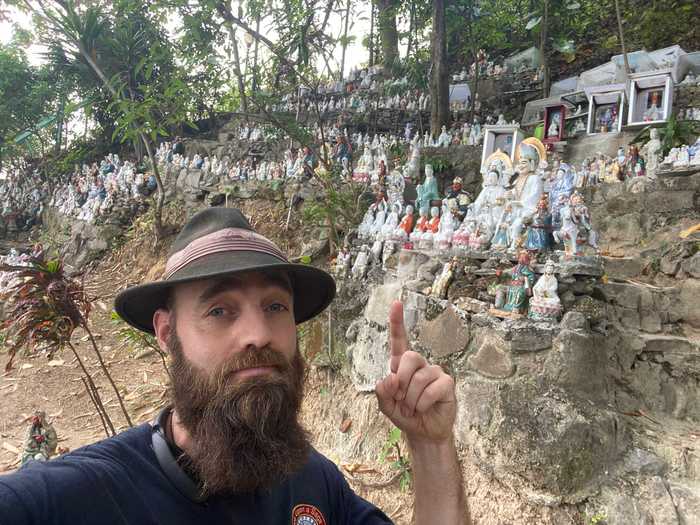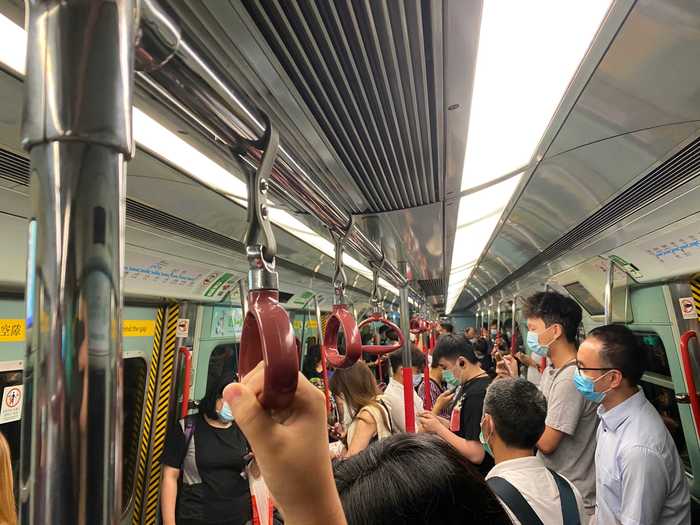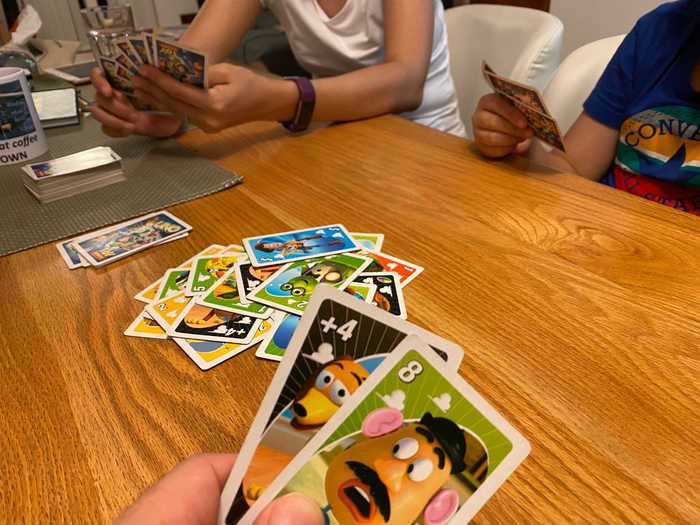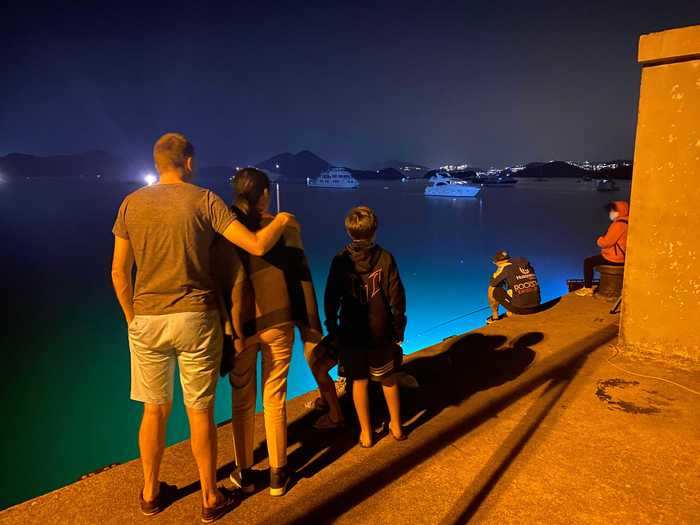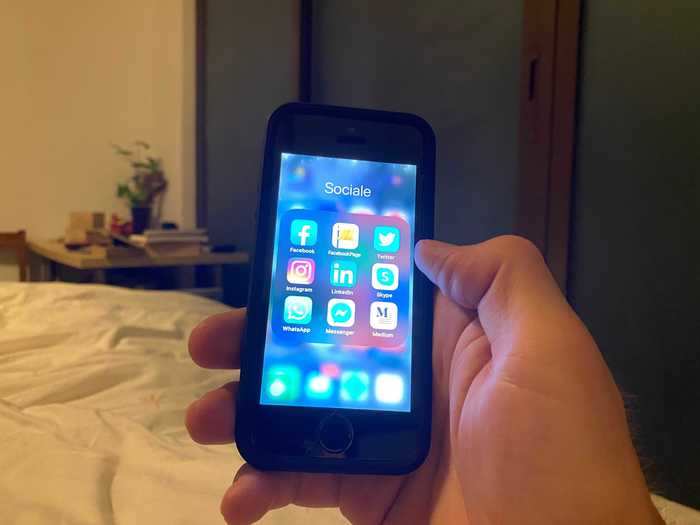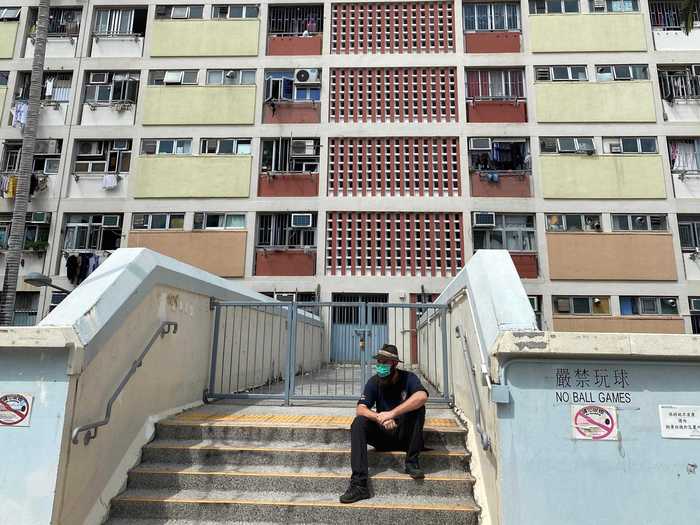Courtesy Torbjørn (Thor) Pedersen
- "Modern Viking" Thor Pedersen is on a journey to become the first person to visit every country in the world without stepping foot on a plane.
- He left his native Denmark in October 2013 and promised he wouldn't return home until he saw his project through. He's also limited himself to a budget of $20 per day.
- In late January, Pedersen had just nine countries left to visit when the coronavirus pandemic put a halt to his plans.
- Pedersen has been living with a host family in Sai Kung, about an hour and 15 minutes outside of downtown Hong Kong, for four months instead of the four days he had originally planned.
- From hiking for 26 hours straight to exploring a downtown Hong Kong devoid of tourists, here's what a typical day in his life looks like during the pandemic.
Six-and-a-half years ago, Torbjørn (Thor) Pedersen left his home in Denmark on a quest to become the first person to visit every country in the world continuously without flying.
In late January, he had just nine left to go — Palau, Vanuatu, Tonga, Samoa, Tuvalu, New Zealand, Australia, Sri Lanka, and the Maldives — and was scheduled to travel on container ship from Hong Kong to Palau when news of the coronavirus outbreak swept the region and travel came to a halt.
Now, instead of spending four days in Hong Kong as he had originally intended, Pedersen has been there for four months, the longest he's stayed in any place over the course of his around-the-world journey.
While Pedersen waits for another opportunity to travel to Palau, he's been adapting to his new life in Hong Kong and chronicling his experiences on his blog, "Once Upon a Saga."
A large part of Thor's travel philosophy is prioritizing local, everyday experiences over visiting tourist attractions. He also sticks to an average budget of $20 per day.
Pedersen has found that life hasn't changed drastically in Hong Kong during the coronavirus pandemic, due in part to cultural and institutional changes adopted in the wake of the 2003 SARS epidemic.
Business Insider caught up with Pedersen on May 20 to learn more how he's spending his time in Hong Kong and asked him to share images of his experiences over the past several weeks.
From hiking the 48-mile Wilson Trail for 26 hours straight to exploring a downtown Hong Kong devoid of tourists, here's what a typical day looks like for the world traveler Thor Pedersen in Hong Kong during the coronavirus pandemic.
Thor Pedersen, 41, had made it to 194 of 203 countries on his nonstop journey around the world when the coronavirus pandemic canceled his travel plans and left him stranded in Hong Kong.
Courtesy Torbjørn (Thor) Pedersen
Hong Kong declared a state of emergency on January 25 after the coronavirus outbreak spread to the region from Wuhan, China. Pedersen arrived by container ship on January 28.
Pedersen waits for a meeting with Hong Kong immigration.
Courtesy Torbjørn (Thor) Pedersen
Though Hong Kong imposed a handful of restrictions to contain the spread of the virus between January and early April, it was never on strict lockdown, and Pedersen told Business Insider that he hasn't observed a dramatic change in day-to-day life.
A street in Sham Shui Po, Kowloon, Hong Kong.
Courtesy Torbjørn (Thor) Pedersen
Pedersen attributes this to the 2003 SARS outbreak. Hongkongers were quick to adopt face masks and self-isolate when the coronavirus hit because "they knew the routine," he said.
Plastic film coverings over elevator buttons, sanitized daily, are among the sanitation measures Hong Kong adopted in the years following SARS, Pedersen told Business Insider.
Courtesy Torbjørn (Thor) Pedersen
The 2003 SARS outbreak in Hong Kong infected more than 1,700 people and resulted in 300 deaths, according to a report from the World Health Organization.
"As one of the most heavily affected epicenters during the SARS epidemic in 2003, Hong Kong is better equipped to contend with an outbreak of COVID-19 than many other countries," Dr. Peng Wu of Hong Kong University's School of Public Health said in mid-April.
Peng cited "improved testing and hospital capacity to handle novel respiratory pathogens, and a population acutely aware of the need to improve personal hygiene and maintain physical distancing."
Hong Kong is beginning to reopen: Bars, entertainment venues, and schools reopened last month, and employees are returning to work. However, a ban on gatherings of eight or more people in crowded places is in effect through June 8 and border restrictions remain in place.
A sign in Hong Kong Central reads "Together, we fight the virus! Please don't gather."
Courtesy Torbjørn (Thor) Pedersen
Currently, non-residents arriving by air to Hong Kong from destinations outside of mainland China, Macau, and Taiwan are denied entry, according to the US Consulate General in Hong Kong and Macau. Non-residents arriving from mainland China, Macau, or Taiwan are allowed to enter only if they haven't traveled elsewhere overseas and must quarantine for two weeks.
While he waits for an opportunity to continue to journey, Pedersen has been staying with a couple and their two boys in Sai Kung, a residential area known for its scenic beaches and hiking trails about an hour and 15 minutes outside of Central, Hong Kong's downtown business district.
Google Maps
On a typical day, Pedersen wakes up at 8:30 a.m., switches on his phone, and writes good morning to his fiancée back home in Denmark.
Pedersen checks his phone first thing in morning.
Courtesy Torbjørn (Thor) Pedersen
Next, he splashes water on his face, does a few push-ups, and heads downstairs to greet his host family and prepare a light breakfast.
Pedersen's breakfast usually consists of oatmeal with raisins and milk plus a cup of tea.
Courtesy Torbjørn (Thor) Pedersen
Around 9:15, a.m. he heads upstairs to brush his teeth and filter drinking water for the morning.
Pedersen brushes his teeth.
Courtesy Torbjørn (Thor) Pedersen
"Generally people say you can drink the tap water in Hong Kong, but most people I know boil it. I use a filter," he said.
Pedersen filters water for drinking.
Courtesy Torbjørn (Thor) Pedersen
By 9:30 a.m., Pedersen is at his laptop checking emails and doing interviews with local and international media.
Pedersen works at his laptop.
Courtesy Torbjørn (Thor) Pedersen
An hour later, he changes into his running clothes, filters more water, and heads downstairs with shoes in hand. He tells his host family where he's headed, starts his watch, and sets out for a run.
Pedersen goes for a run outside.
Courtesy Torbjørn (Thor) Pedersen
Pedersen has been on the road years longer than he anticipated and misses his fiancée and parents. Running helps him stay motivated to see his journey through. "I am a firm believer in a healthy body being key to a healthy mind," he wrote in a blog post on May 22.
Pedersen has been running between four and 7.4 miles every other day despite temperatures hovering around 86 degrees Fahrenheit with a humidity of 88%, he told Business Insider.
"The humidity is a killer," Pedersen wrote.
To complement his runs, Pedersen has been hiking the network of trails around Hong Kong on weekends.
Pedersen on the Hong Kong Trail, Hong Kong Island.
Courtesy Torbjørn (Thor) Pedersen
This past weekend, he through-hiked the 48-mile Wilson Trail with friends, which starts in Hong Kong Island and ends near the Chinese border. The trail took him 26 hours to complete.
"A little-known fact about Hong Kong is that it is 75% nature," Pedersen told Business Insider.
Pedersen has noticed an influx of hikers on the trails as temperatures have risen and Hong Kong locals emerge from self-isolation. "The trails are very, very popular in Hong Kong in general," he said. "I think they've become even more so now."
While most residents choose to wear masks in public spaces, fewer wear them on the trails, Pedersen said. Hong Kong's current social distancing guidelines recommend that residents stay at least three feet apart from each other and wear a mask in crowded places.
Once Pedersen returns home from exercising, he immediately starts rehydrating and stretching. He then takes a shower and prepares to leave the house.
Flatlay of Pedersen's travel uniform and accessories.
Courtesy Torbjørn (Thor) Pedersen
Pedersen always wears a brimmed hat, ties a scarf around his waist, and carries a few trusty accessories in his pockets when he heads out the door.
In one shirt pocket, he carries local cash and a face mask. In another, he carries his phone, a ball pen, his Octopus card for public transport, and a few business cards to hand out.
He also carries his passport, vaccination cards, spare passport photos, compact multi-tool, credit cards, driver's license, Danish Red Cross emblem (he's an ambassador), and Foreign Correspondents' Club membership card.
Pedersen first catches a bus to Sai Kung's town center where he has a light lunch. Restaurants have fewer customers than they did before the pandemic, but have remained open, he told Business Insider.
A typical lunch for Pedersen: soup with pork, thin noodles, and pepper.
Courtesy Torbjørn (Thor) Pedersen
From Sai Kung, he catches another bus to Hang Hau MTR metro station in order to head into Central. The commute takes him about an hour and 15 minutes total.
Pedersen travels on a minibus.
Courtesy Torbjørn (Thor) Pedersen
Pedersen has seen photos of metro cars around the world where commuters are spaced out and observing social distancing. "That's never been the case in Hong Kong," he told Business Insider.
Pedersen rides the Hong Kong's metro, known as the MTR.
Courtesy Torbjørn (Thor) Pedersen
Commuters in Hong Kong continue to stand and sit next to each other. "It's like this Superman power — you put on the mask and you're fine and then you can almost do whatever you want," he said.
Pedersen rides the MTR.
Courtesy Torbjørn (Thor) Pedersen
On weekdays in April, 2.8 million people rode the Hong Kong metro every day, according to MTR. That's down from 4.8 million riders in April 2019, but not an insignificant number considering Hong Kong's population is 7.4 million.
Because less than 25% of Hong Kong's landmass is developed, relatively few people own cars and instead rely on public transportation, Pedersen explained.
After arriving in Central around 2 p.m., Pedersen walks ten minutes up to the Foreign Correspondents' Club either to sit and work or for an afternoon meeting.
Pedersen sits at the Foreign Correspondents' Club.
Courtesy Torbjørn (Thor) Pedersen
The club, which opened during WWII as a social club for international journalists, has granted Pedersen a guest membership.
During his time in Hong Kong, Thor has met with everyone from local business owners to journalists to old friends.
When he doesn't have an afternoon engagement, he explores the city and takes photos for his blog and social media.
Pedersen gazes up at a skyscraper in Hong Kong Central.
Courtesy Torbjørn (Thor) Pedersen
Typically, Hong Kong is flooded with tourists in April and May, and locals head out of town to escape the city heat, Pedersen told Business Insider. However, because the borders are closed, there are practically no tourists, and locals have to stay put.
Pedersen visits Waterfall Bay on Hong Kong Island, home to thousands of "retired" deity statues.
Courtesy Torbjørn (Thor) Pedersen
After an afternoon of exploring the city and engagements, Pedersen usually heads back to his host family in time for dinner, following the same route back.
Pedersen rides the MTR.
Courtesy Torbjørn (Thor) Pedersen
In Sai Kung's town center, he quickly stops into a supermarket to pick up some groceries. His host family provides most meals, but he buys his own breakfast supplies.
Pedersen purchases groceries in Sai Kung.
Courtesy Torbjørn (Thor) Pedersen
Back home, he greets everyone and they about talk about their respective days. Dinner is usually served before 7 p.m. and "it is always good," Pedersen said.
Pedersen enjoys dinner with his host family.
Courtesy Torbjørn (Thor) Pedersen
Following dinner, the family might play a game like Monopoly, Uno, or Kahoot if the boys aren't watching YouTube or playing video games.
Pedersen and his host family play a card game.
Courtesy Torbjørn (Thor) Pedersen
Occasionally, they will go out for a short evening walk together.
Pedersen and his host family go on an evening walk.
Courtesy Torbjørn (Thor) Pedersen
By 10 p.m. the family has retired for the day. Thor makes a cup of tea and heads upstairs to work for a few more hours.
Pedersen checks his phone before bed.
Courtesy Torbjørn (Thor) Pedersen
"Depending on the day, I might be blogging, creating content for the Red Cross, replying to interviews, editing video, managing social media, or simply doing research," he said.
Pedersen tries to go to sleep no later than 2 a.m. "My phone always reminds me that my bedtime is at 12:30 am, but that never happens," he said.
Before bed, he watches a sitcom or videos on YouTube, then writes his fiancée goodnight.
Thor is in conversation with container ship operators about traveling to his next destination, Palau, but is not sure when his journey will resume. For now, he is taking it one day at a time.
Pedersen visits Choi Hung Estate, a public housing estate popular with photographers.
Courtesy Torbjørn (Thor) Pedersen
Pedersen estimates that it will take him 10 months to complete his journey once he leaves Hong Kong.

